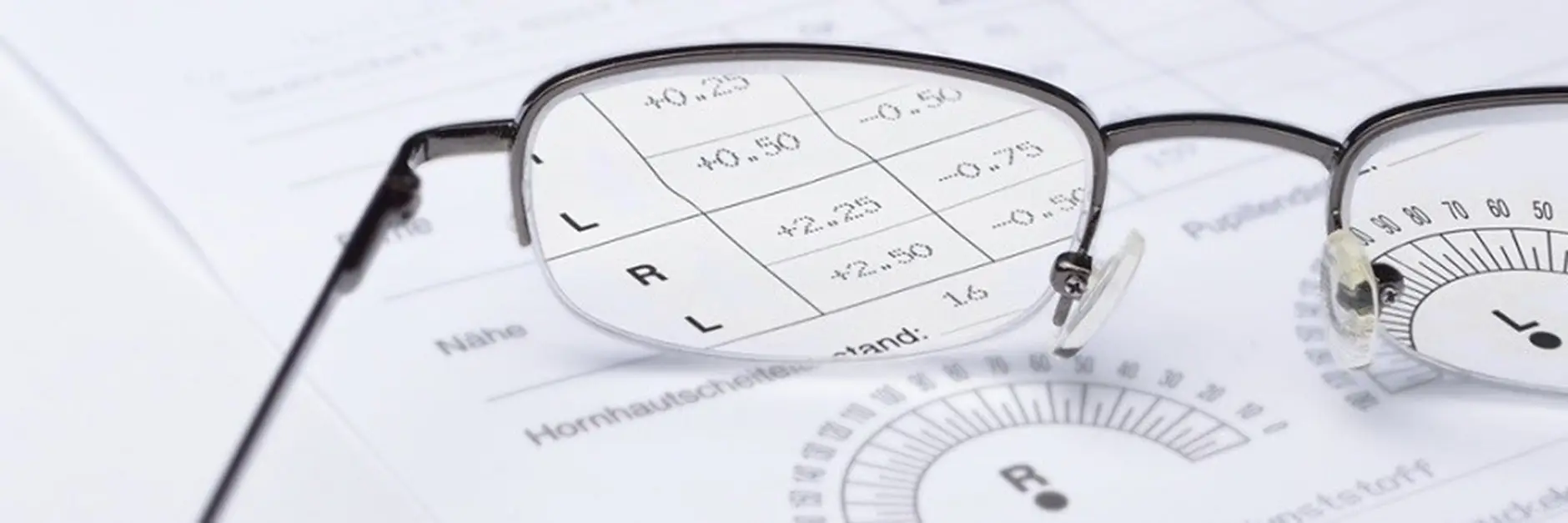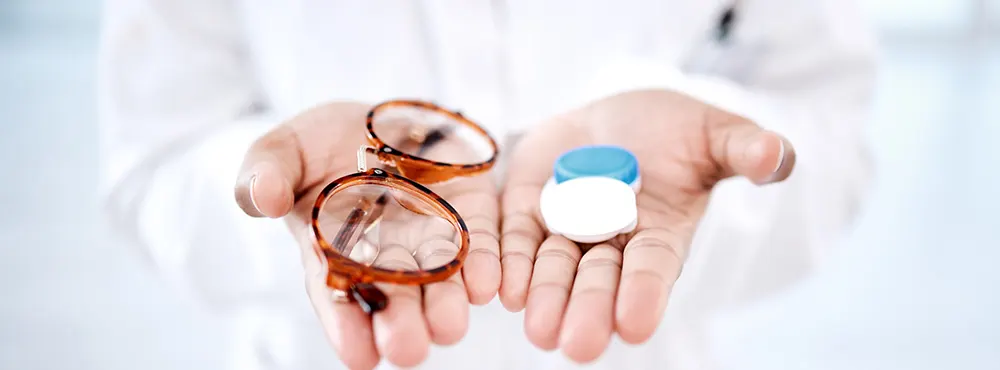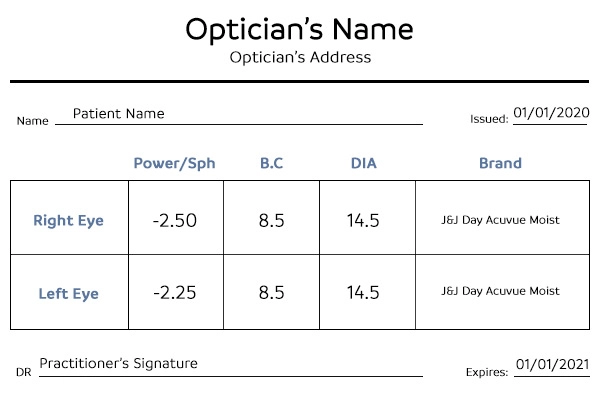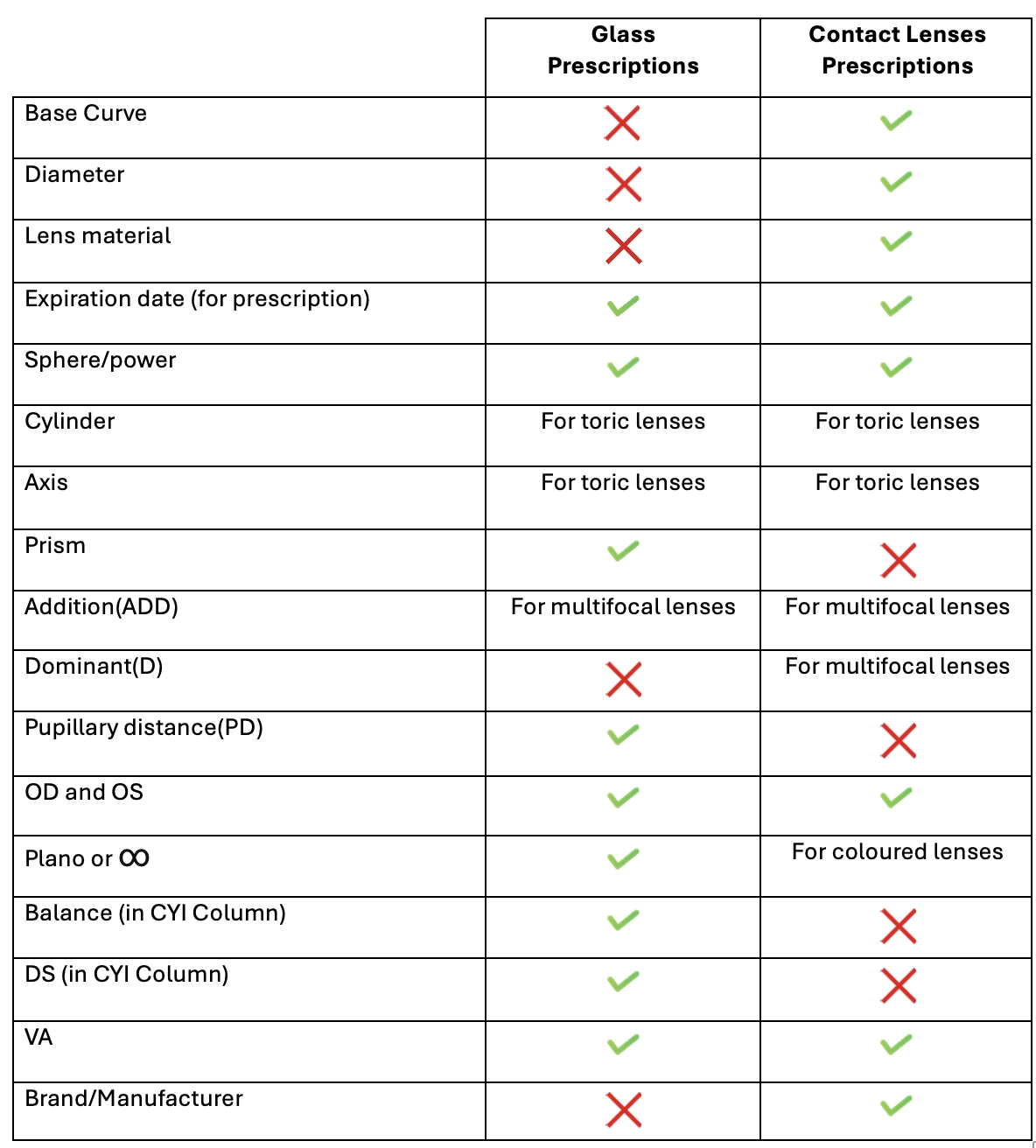Contact lenses prescriptions include certain specifications that are not part of a glasses prescription, these include:
Base curve: the base curve measures the curvature of the lens; it is determined by the actual shape of your eye and produces the right lens fitting.
Diameter: the lens diameter specifies the overall size of the lens. Along with the base curve, this determines how the lens fits on the eye.
Lens material: in days gone by, glasses were made from actual glass, nowadays, most glasses are made of a lightweight plastic. Contact lenses on the other hand, are made from a range of hydrogels. These are split into hydrogel or silicone hydrogel contacts. How each lens fits and feels depends on each individual wearer’s eyes. Those that require longer wearing times generally do better with silicone hydrogel contact lenses as they allow a greater level of oxygen and hydration into the eye.
Brand/manufacturer: A contact lens prescription may also include an axis and cylinder if it is a toric lens for astigmatism, or an add if it is a multifocal lens. These measurements can often be found on both contact lenses and glasses prescription.
A glasses prescription contains a sphere indicating the lens power, a cylinder indicating strength of any astigmatism (if there is one stated) and an axis showing the orientation of the cylinder. Multifocal lenses require an ‘add’ which indicates additional positive power that enable the eyes to focus for close work.
A contact lens prescription may also include an axis and cylinder if it is a toric lens for astigmatism, or an add if it is a multifocal lens.
You’ll find that the cylinder number on a contact lens prescription is usually written as a minus number. This indicates the extra power you need for astigmatism correction. A higher number denotes a more severe level of astigmatism. The cylinder value for a glasses prescription is most commonly written as a minus form but occasionally it can be written in plus form too. You won’t have any value’s in this column on your prescription if you don’t have astigmatism.


 Offers
Offers Account
Account
 Favorite
Favorite
 Basket
Basket

 OFFERS
OFFERS



















